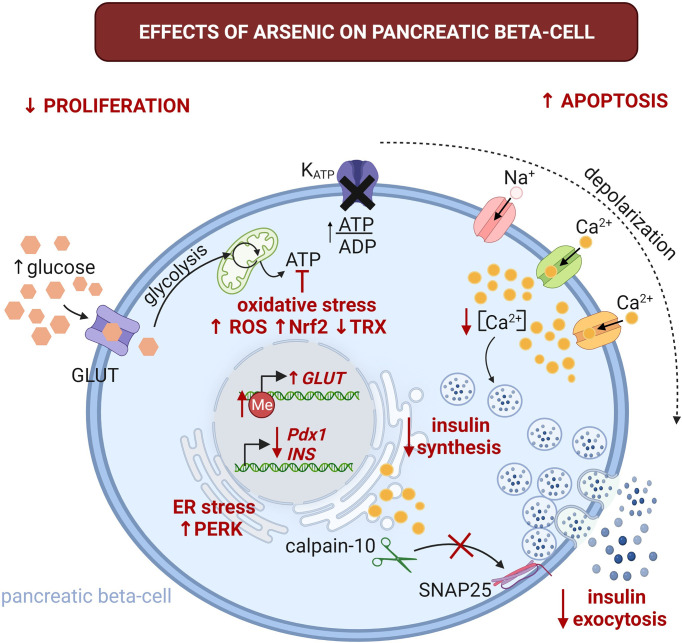Figure 1.
Effects of arsenic on pancreatic beta-cell physiology. The alterations induced by this pollutant are highlighted with red font. Arsenic could promote glucose intolerance and T2D through beta-cell damage and impaired GSIS. It promotes beta cell apoptosis, while inhibiting proliferation. This can lead to imbalance in beta-cell mass contributing to decreased insulin secretion and promoting the development of T2D. Arsenic severely impairs glucose tolerance by the reduction of GSIS. It affects insulin synthesis by decreasing insulin mRNA (INS) levels, increasing endoplasmic reticulum (ER) stress and activation of protein kinase RNA-like endoplasmic reticulum kinase (PERK). Arsenic can also impair GSIS through several mechanisms, including oxidative stress by altering mitochondrial metabolism, this can also lead to alterations in the ATP/ADP ratio, which is an essential step for GSIS. Arsenic inhibits the oscillations of intracellular Ca2+ and reduces the proteolysis of synaptosomal-associated protein 25kDa (SNAP-25) by calpain-10 protease. These alterations result in decreased insulin secretion. GLUT, glucose transporter (GLUT1 and 3 in humans, GLUT2 in rodents); Me, 5-methylcytidine; Nrf2, nuclear factor erythroid 2-related factor 2; Pdx1, pancreatic and duodenal homeobox 1; ROS, reactive oxygen species; TRX, thioredoxin. Created with BioRender.com.

